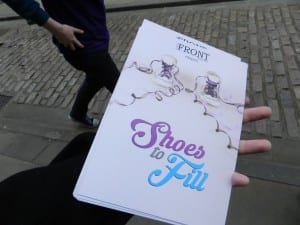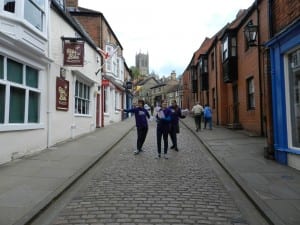Going off our target audience, specified in our marketing pack, we had to make sure we could spread the word to them effectively, the best way of doing this, away from social media, is the distribution of flyers and posters. One of our main audiences is students, as our production is by students but also because a lot of the themes in our piece are aimed at people going through some of the big stages and changes in adult life, in our show we established this as Job/Higher education, we therefore put posters up around campus, focusing on the media building the library and the main building as these got the main influx of people. To get a local audience of ages 15 and above we created a flyering plan.
There is a massive importance of interacting with customers in person as well as online, though there is definitely a need to have an online presence now as most people use social media on a daily basis and the ability to find out about shows and buy tickets for them all online, the Creative Arts Marketing resource states the importance of speaking to the audiences in person and not just online. “The danger of such a comprehensive system is, of course, information overload and the temptation to interact with computers rather than people.” (Hill and O’sullivan, 2003, p.5)
For this in person flyering we needed to establish who our target audience is so using A flat-pack guide to marketing the arts we first tried to establish who our existing audiences are, these are people that are: “reliable, likely to attend frequently, likely to be your highest spenders, comfortable with your product, comfortable with your communications, relatively cheap to communicate with.” (Griffin, 2007, p.21)
For us these are mainly students from the university of Lincoln, they tend to be mainly drama and media students that frequently see work at LPAC and would easily accept our work. Another group of people that fit in this would be family and friends of the company who would likely be the higher spenders and easy to communicate the show to.
To gain a bigger sale of tickets we needed to look at bringing in new audiences Caroline Griffin says that to do this we need to look for “the regular audiences of the future, fresh and excited about your activities, likely to help you meet your social objectives”. (Griffin, 2007, p.21) To gain these we needed to market to the types of people that feature in our show, so to look at the structure of our show it is broken down into five different sections:
Growing up-so we can aim at school children, emailing schools with information about the show.
Job and Higher education- so we can aim at people at university and in starter jobs. Putting posters up around campus and flyering around the high street.
Finding the one- Maybe promoting in bars and cafés, areas where people would tend to be on dates or trying to meet someone.
Becoming a parent- This is a rather broad section as it can apply to lots of people, so to be more specific trying to promoting in community centres where there may be parenting groups meeting and promoting to the parents of our company.
Growing Old- Online promotion may not work for this section, so flyering in person and flyering at events such as heritage events around Lincoln.
Using this knowledge and the distribution plan the whole company got involved with flyering around lincoln.


Griffin, Caroline. 2007. This way up, A flat-pack guide to marketing the Arts. Arts Council England: Cambridge
Hill, Liz. O’Sullivan, Catherine. O’Sullivan, Terry. Creative Arts Marketing. Oxford: Butterworth
-Hope